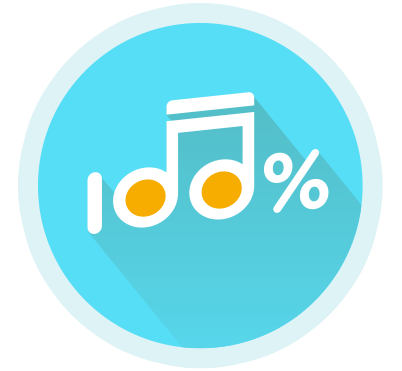"Gamify" Your Flashcards - Go Digital!
To begin with, using flashcards to name notes is great! However, it can get tedious after a while. A digital note-naming game is a great addition to your flashcard routine. I think you will feel it is $4.99 well spent to download Note Rush, a great little app that works with the mic on your device to know if your child played the right note on the piano. It has several settings, and covers all the notes, including all the ledger line notes, on the entire grand staff and piano. I would recommend downloading it soon, and if your child is struggling, start with Level 1 and choose Treble or Bass Clef only. Keep adding more notes as they get quicker until you are playing on a Level 3 with both Treble and Bass. The goal is to eventually get very fast at finding notes on the whole grand staff. In Orange Roots, we focus on the Level 3 notes, but you can branch out to ledger lines if your child needs a new challenge. Here's a YoutTube tutorial so you can see how it works and easily recognize it in the app store.
Get the Family Involved - Go Old-School!
If you need more than one way to mix up the note reading challenge, try some of these flashcard and Smart Staff games with your child during practice time:
Say It and Play It
While sitting at the piano, you flash a card and they say the letter name and play it in the correct octave. Variation: they say and play one card, you say and play the next, or race to say/play each card the quickest.
Smarties Staff
Page 31 of your Orange Roots songbook has a "Smarties Staff" where you can scatter candies and have your child name the note then eat the candy.
Point and Pound
Using the Smarties Staff on your music stand, and a pointer or pencil eraser, point to a line or space and the child names and plays that note on repeat "C,C,C,C" until you move to a new line or space.
Beat Circle Note Names
Set a metronome to 60-80 bpm in 4/4 time (or clap-clap-clap-pat your lap). Flash a card for your student to 'say it and play it' on beat 4 every time. For example, they clap, clap, clap, say & play a D, clap, clap, clap, say & play a G, etc. You can speed up the metronome as they get better at naming notes, or switch to 3/4 time! Variation: you can switch up the rhythm they play the note on. Have them play a beetle, caterpillar, butterfly or grasshopper. Say the note name the correct number of times to match the played rhythm.
Around the World
Take your flashcards off the ring and lay them in a large circle on the floor, facing the outside of the circle. Choose a card to start on, and you and your student walk around the circle in opposite directions, naming each note as you step in front of it. It's a race to see who makes it back to the starting note first!
Set of Three
Take out one of each of the middle notes (C, D, B), then shuffle and lay all the flashcards out, staff side face up. As soon as they spot a set of three, they call out the letter name and flip the three cards over. Continue until all cards are face down (piano side up). Variation 1: Time yourself, then play again to see if you can beat your previous time. Variation 2: Play against a partner to see who can collect the most sets.
Jumping Beans
Use sidewalk chalk or painter's tape to create a 5-line floor staff inside or out. Decide if it's Bass or Treble Clef and call out a note name for your child to jump to. You may add a ledger line for ease in finding middle C, D and B. Variation: Find Two! Are there two E's in Treble Clef? Yes! Find them both! What else are there two of? Are there two A's in Bass Clef? Yes! Find them both! What else are there two of?
Does it transfer to printed music?
Any of these games will be fun and helpful in learning note names and finding them on the piano, but sometimes a student can know their notes well on flashcards or in a game, and still not transfer the knowledge to printed music in the context of a song. Occasionally, it is helpful to just go through a song they're learning and point to a set of ordered or random notes for them to 'say and play,' or have them look at the music and name the notes of the first line before they start playing...anything to get them thinking about how they DO know the notes on the page, and they CAN read music!























